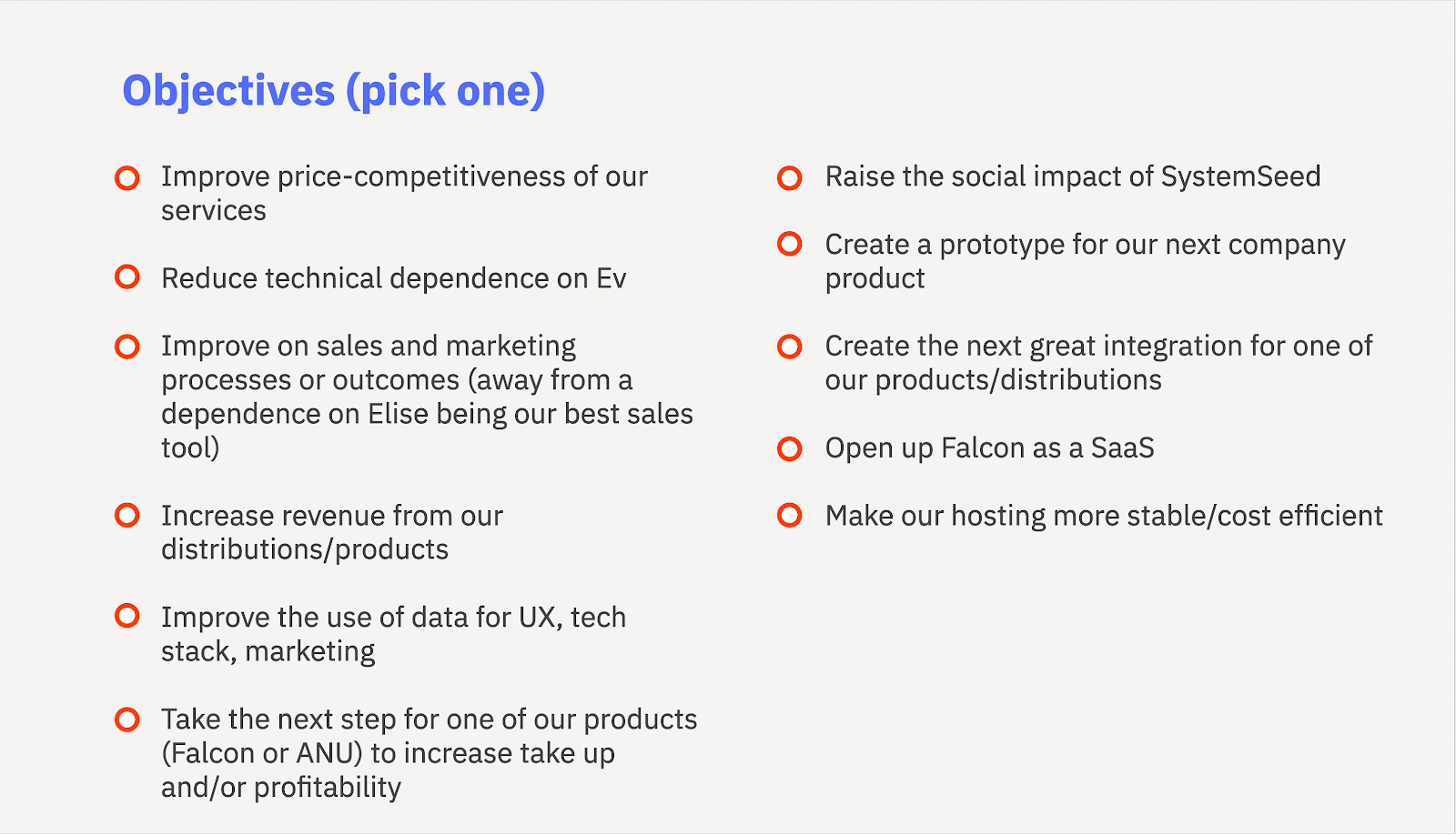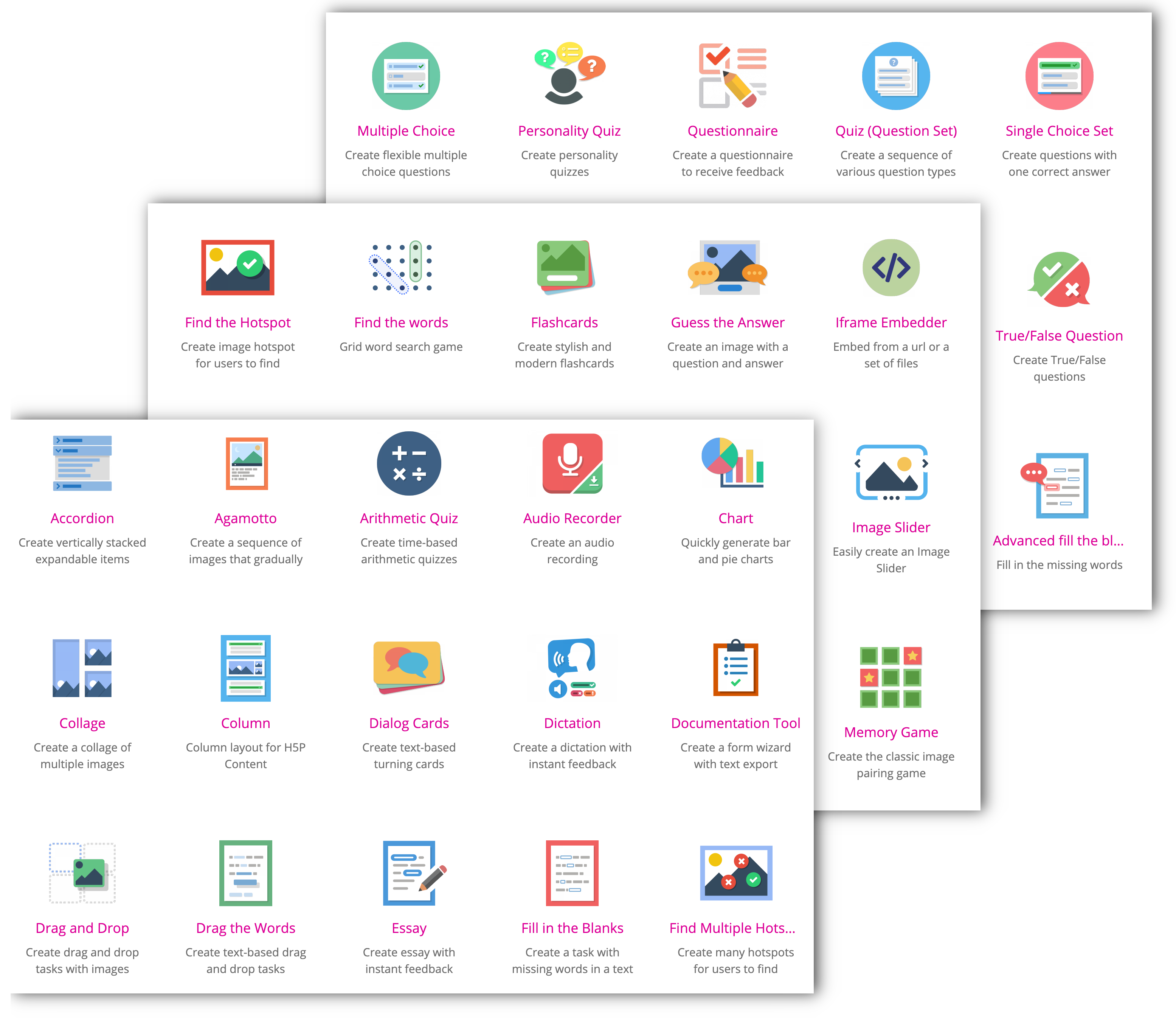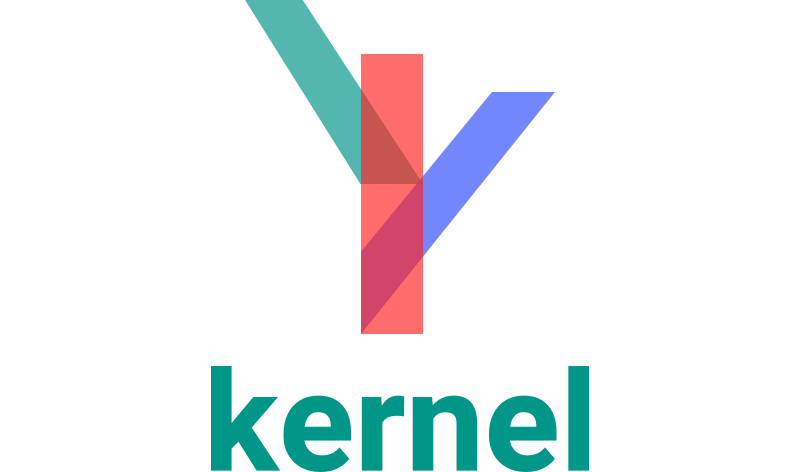
Redesign our LMS product in a single hackathon? Oh yes we did!
Brainstorming the future of e-learning
What do you do when a global pandemic shuts down all in-person professional gatherings? At SystemSeed, we decided to host our own fully-virtual conference, including a training week and hackathon: SeedCon 2020. Read all about it here.
Goal Driven
Every hackathon worth its salt has a whiteboard of objectives and resources to work with, so of course SeedCon 2020 provided its own SystemSeed-focused ones - check out all the hack goals below;
Since we had Mandeep Locham as a digital learning specialist on our team, we picked up the goal that would allow us to best use her background in education. It’s not every day that an education professional is part of a tech-focused hackathon team, so we decided to use that unique opportunity: taking our very own ANU LMS (learning management system) to the next level.
We had loads of technical expertise on our team, so it was very tempting to start developing a new and shiny app. However, after substantial deliberation, we realized that creating a fully-fledged roadmap and product strategy would be much more valuable at this stage.
Agile to the rescue
With our goal set, we started by creating our backlog. Some of the main stories defined in our backlog revolved around the following:
- Value Proposition Canvas
- Competitive Analysis
- Value / Effort matrix
- Roadmap
Our Acceptance Criteria were as simple as they needed to be, enough to define the scope of what needed to be done as part of that story, without any details like technical requirements. To create our Roadmap, we created a value / effort matrix of main Epics to break down. We created the Roadmap as a high level strategic map that must be reviewed and adapted on a regular basis.
Moving to a digital learning environment beyond LMS
Thought leaders in education have long been calling for a change in the way we facilitate learning. The traditional LMS is often used by institutions to organize and monitor learners, with a lot of natural classroom interaction falling by the wayside. We wanted to develop our existing tool, Anu, to retain traditional LMS functionality but with added features to put teachers, students and learning at the heart of the knowledge sharing process.
We used research from an extensive study of the LMS market, along with reports on the post-COVID-19 learning landscape, and a survey of teachers working in higher education who brought their real-life perspectives to the project. Based on this research, we set out to build a roadmap for a digital ecosystem that combined all the traditional elements of an LMS with a range of existing digital tools that could be integrated seamlessly.
We pictured this as a digital ecosystem created to be flexible and designed to reflect the pedagogy of any given institution using it. A clear step away from the clunky, counter intuitive and administration-focused LMS offerings currently on the market.
We used LEGO as inspiration to imagine a range of tools that could fit together to provide a bespoke learning environment. An educator should be able to plug and play the features needed to design, teach and evaluate training. Flexible blocks of tools would allow us to provide solutions in many learning contexts allowing for greater simplicity and customization.
Social Learning
Our research showed us that a common concern among educators in the rush to move online during the pandemic is the gap between getting to grips with digital tools and understanding how to use these tools for teaching that best served the needs of their students. We integrated a range of solutions in our roadmap that considered how teachers could find support, create a community and share best practices using our new product.
We investigated and chose a range of plugins to add to our digital ecosystem that give access to an array of multimedia content types, materials and quiz systems all to encourage engaging learning. Motivating gamified experiences, along with badges and certifications to reward effort were also included in the roadmap.
We decided early on that in designing for a learning community we had to not only include ways the community supported its members, but also look at how the community could give something back. A number of projects and learning initiatives linked to UNESCO’s call for greater mobile learning projects to aid disadvantaged learners were evaluated and the most suitable candidate was also included in the roadmap.
Introducing Kernel
Many LMS solutions, including our own ANU, have only some of these features, but none of them offer the holistic approach we brainstormed with valuable insight from the education community. Our novel approach had to have a new name. We chose ‘Kernel’, representing three inspirations; a seed as part of the SystemSeed family, a synonym for a fundamental unit of truth and a name that resonates with nature - towards a digital learning ecosystem.





